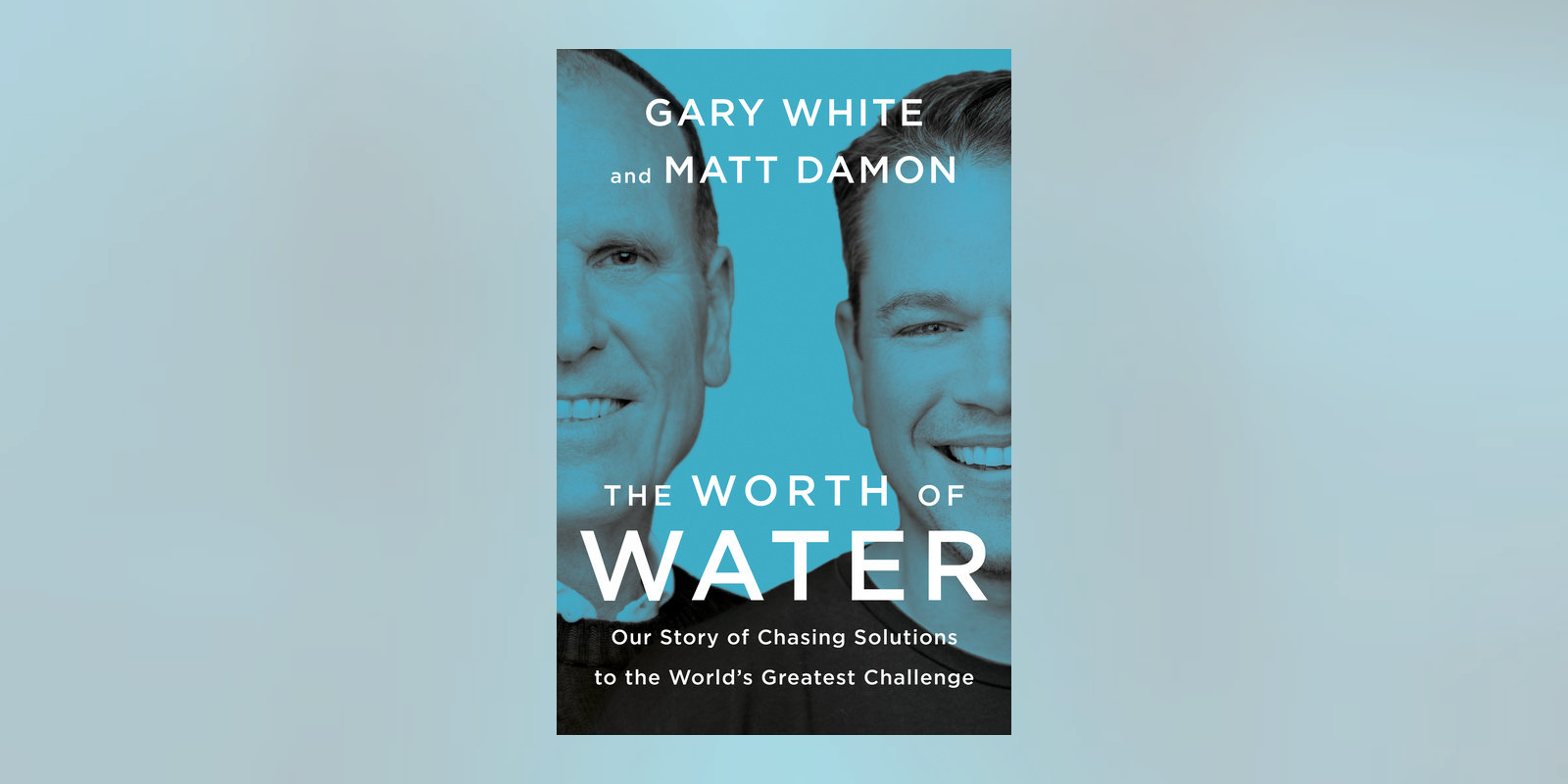By: Matt Damon
 When one of the world’s great social entrepreneurs, Gary White, first told me his solution for ending the global water crisis, I honestly thought it sounded absurd.
When one of the world’s great social entrepreneurs, Gary White, first told me his solution for ending the global water crisis, I honestly thought it sounded absurd.
Our conversation took place back in 2008, at the Clinton Global Initiative. Gary and I were at CGI because we were both, at the time, leading organizations that built wells in some of the world’s poorest places. Gary had been doing this work for nearly two decades, and doing it better than anyone, so I was excited to meet him.
But then he described his new idea. Instead of building wells, he said, we should offer loans to people living in poverty, which would allow them to build—and pay for—water and sanitation solutions themselves.
Again, I was confounded. We were talking about people who had to struggle to meet their most basic needs. Did Gary really think they could take on a loan, let alone for something—water—that we in rich nations often get for free, or almost for free. Imagine coming across someone dying of thirst, and instead of giving them your water bottle, asking them if they want to buy one. It just felt wrong.
But as we spoke, I could feel my perspective beginning to shift. Gary got me to look at the water crisis in a completely different way—not as a charity case.
The fact is the water crisis is too big to be a charity case. There are 771 million people who need access to clean water, and 1.7 billion people who lack access to a toilet. To get them that access is expensive: our best estimates say it’s going to take about $114 billion a year over a decade.
And if you add up all the development assistance, from all the world, going to water and sanitation right now, you only get $28 billion. That means that over the next decade, we’re going to come up $850 billion short. That’s the GDP of a small country. It’s not the kind of funding gap that can be closed by philanthropy alone.
To me, the message of these numbers was not “OK, so charity needs to raise its game.” It was “we need a paradigm shift.” And this was the exciting part: Gary was able to describe what that new paradigm could be.
As Gary explained, people in these incredibly poor places—people we often talk about as if they have “nothing”—are actually paying extraordinary amounts of money for water and sanitation.
With the little money they have, they’re buying water from vendors at rates 10 to 15 times higher than tap water costs. Then they’re paying the resulting hospital costs when that water makes them sick. Some are even paying every day to use public latrines.
Economists call these “coping costs,” and they add up to a staggering $300 billion a year—almost three times the $114 billion a year we need to solve the crisis for good. Gary made clear that if we could redirect the money that people were paying for stop-gap, dead-end solutions like dirty water from tanker trucks, and apply it instead to permanent, cost-efficient solutions like water taps in homes—then people could do a lot more than cope. They could defy, and maybe someday escape, the circumstances that had trapped them their entire lives.
With that idea in mind—absurd or brilliant, we didn’t yet know—Gary and I started an organization, Water.org. We offered microloans to people like Leneriza, a woman in the Philippines who got a water tap installed in her house. She once paid $60 a month in coping costs. But now, after repaying her loan in less than 11 months, she pays just $5 a month to the local water utility. She has both clean, safe water and $55 a month more to support her family.
These loans are repaid at a rate of 99 percent. And because they generate actual returns, we’ve been able to fund our work not only through philanthropic capital, but through investment capital—a pool of potential funding 1,500 times bigger.
When we focused on building wells, it took Gary and me, between our two organizations, twenty years to reach our first million people. In the last ten years since we started focusing on market-based solutions, we’ve reached fifty million people—and counting.
Our book, The Worth of Water, tells the story of hundreds of millions of people who, like Leneriza, are breaking the cycle of poverty. For anyone who’s studying social entrepreneurship, impact investing, or ethics, it provides a case study in how to:
• Get out of the mindset that, in the words of Muhammad Yunus, “the rich will do the business, and the poor will have the charity.”
• Apply the hallmarks of entrepreneurship—a focus on problem-solving, innovation, and scalable growth—to the world’s greatest challenges.
• Navigate the ethical challenges that come with applying market-based solutions in the world’s poorest places.
• Harness the power of Impact Investing, Venture Philanthropy, and Megagiving movements to take on social challenges.
Gary transformed the way I think about the water crisis. And over the 14 years since, we’ve shown that these ideas work on a global scale—suggesting that this same paradigm shift could be helpful in solving many more of the world’s great challenges.
Whatever the issue, we’ll only get change on the scale we need by acknowledging the resilience, determination, and power of people living in poverty—and seeing them as one of the smartest investments we can make to fight global inequities.






